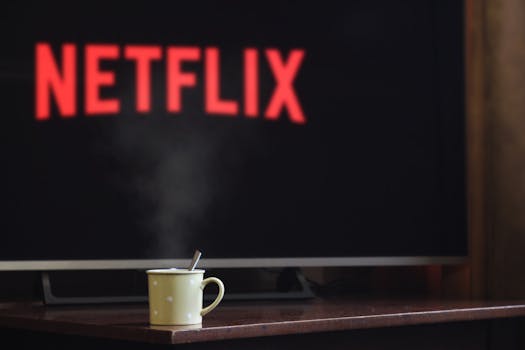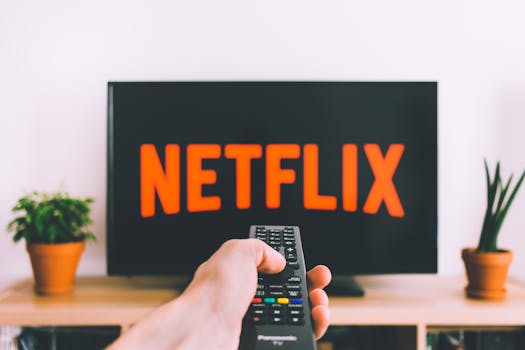Anúncios
In recent years, the landscape of television shows has evolved significantly, leading to a surge of interest in show analysis. This transformation is particularly noted in the realm of psychological thrillers, which have garnered substantial attention for their ability to captivate and provoke thought. Among the standout series in this genre is “The Undoing,” a show that has ignited conversations about complex characters and intricate storytelling. The discussions surrounding this series reflect the richness and depth of the psychological thriller category, underlining its impact on contemporary culture.
From the very first episode, “The Undoing” established a narrative that is gripping and immersive, pulling viewers into a world suffused with suspense and moral ambiguity. The show is centered on themes of trust, betrayal, and the various masks people wear in society—elements that resonate deeply with audiences and provoke introspection. Viewers are challenged to confront their own perceptions of right and wrong as they embark on this journey, with each episode deftly unraveling the intricacies of human behavior and choices.
A significant aspect of “The Undoing” lies in its character development, particularly evident in the protagonist, Grace Fraser, played masterfully by Nicole Kidman. Grace’s transformation from a seemingly solid and confident therapist to a woman engulfed in a web of secrets and lies illustrates the show’s exploration of identity and personal struggle. This evolution is not only compelling; it mirrors the real-life challenges many face concerning self-perception and identity in both personal and professional realms. The complexities surrounding Grace’s character development allow for a nuanced exploration of how circumstances can alter one’s sense of self.
Additionally, the character of Jonathan Fraser, portrayed by Hugh Grant, adds considerable depth to the narrative. His enigmatic nature introduces layers of intrigue, compelling the audience to continually reevaluate their initial judgments. Jonathan embodies the duality that exists in human character—the idea that individuals are often not what they appear. This complexity drives the tension throughout the series, emphasizing the notion that truth can be elusive. The characters’ multi-faceted nature enhances the emotional stakes, inviting viewers to question their assumptions and the generalizations often made about appearance and identity.
In terms of visual storytelling, “The Undoing” excels in crafting an atmospheric experience that enhances psychological tension. The series uses stunning cinematography to capture the opulence of New York City’s Upper East Side, juxtaposing its lavishness against the darker themes of the narrative. This contrast serves a critical function by heightening suspense, as the visuals often convey emotions that dialogue alone may not fully encapsulate. From the meticulous use of lighting to the intricacies of spatial design, the visual elements play a vital role in immersing the audience into the world of the story and its emotional landscape.
The pacing of “The Undoing” is another hallmark that contributes to its success. Over the course of its six episodes, tension is masterfully built, leading to a climactic finale that keeps viewers guessing until the very end. This careful balance of gradual reveals and unexpected twists allows the series to maintain audience engagement without overwhelming them. This dynamic creates a masterclass in suspenseful storytelling, keeping viewers invested in the unfolding drama as they navigate the twists and turns of the plot.
Equally worthy of praise is the writing in “The Undoing,” which often reflects the subtext of the characters’ inner conflicts and the societal pressures they face. The dialogue serves not just as conversation but as a window into the characters’ motivations and the secrets they harbor. Each exchange is layered with meaning, reflecting the intricate web of human relationships and the facades individuals maintain in social contexts. This complexity gives substance to the narrative and deepens the audience’s understanding of each character’s journey.
Moreover, the effect of the soundtrack cannot be overstated. The score’s haunting melodies and strategic use of silence help to cultivate an atmosphere of unease that resonates deeply with viewers. Music in film and television serves to set the emotional tone, and “The Undoing” effectively employs this technique, enhancing the viewer’s emotional experience. The coupling of visual and auditory elements enriches the overall storytelling, enabling audiences to feel more profoundly connected to the characters and their struggles.
As the narrative unfolds, “The Undoing” does not merely entertain; it invites viewers into discussions about moral dilemmas and the repercussions of one’s actions. This reflective quality prompts audiences to explore their moral compasses and question the societal norms they encounter. The show’s capacity to facilitate such dialogues demonstrates its potency as a cultural artifact, engaging audiences in conversations that extend far beyond the screen and into the realms of ethics, justice, and accountability.
The societal implications of the themes explored in “The Undoing” are profound. The series holds a mirror to the privilege and social dynamics endemic to elite circles, shedding light on issues that are often overlooked. By exposing the darker undercurrents of wealth and power, the show critiques how these factors shape human behavior and societal perceptions. This critical analysis of socio-economic structures underscores the importance of examining how privilege influences morality and individual choices within the context of relationships.
In a broader framework, “The Undoing” fits seamlessly into a larger trend of psychological thrillers that examine similar themes. Notable contemporaries like “Big Little Lies” and “You” have paved the way for narratives that delve deep into the human psyche and moral ambiguity. This trend reflects an increasing fascination with stories that profile characters who exist outside traditional societal norms, provoking thought about authenticity in a world dominated by appearances. In this way, the series contributes to a dialogue about the nature of identity and the complexities of human behavior.
Psychological thrillers frequently resonate with contemporary society’s fears and anxieties, tapping into pertinent issues such as mental health, infidelity, and societal pressures. This relatability speaks volumes to audience engagement, as viewers find themselves grappling with the same dilemmas that are presented on screen. As cultural discourse evolves, these narratives reflect and illuminate the complexities inherent in modern life, inviting audiences to consider their own experiences and the broader societal implications of their choices.
The presence of unreliable narrators further enriches the viewing experience, keeping audiences guessing about whom to trust. This narrative technique effectively mirrors the uncertainties of real life, where truth and deception often intermingle. The engagement required from viewers compels them to actively participate in constructing the narrative, piecing together clues and formulating theories as they navigate the story. This invites a deeper level of investment in the series and challenges viewers to reflect critically on the unfolding drama.
The impact of “The Undoing” reaches beyond simple viewership metrics, influencing a plethora of discussions within academic and critical circles. The show is frequently dissected for its themes, character arcs, and psychological implications, contributing to its status as a significant cultural text. Such scrutiny highlights the series’ ability to provoke thought and encourage vital conversations on moral and ethical dimensions display throughout its narrative complexity.
As the digital age proliferates diverse storytelling mediums, social media has emerged as a pivotal factor in shaping discourse around shows like “The Undoing.” Platforms such as Twitter and Instagram provide spaces for fans to share theories, reactions, and analyses, thus fostering a community of engaged viewers. This interactive dimension enhances the experience, enabling audiences to feel part of a larger conversation that thrives beyond mere passive consumption of the series.
Additionally, the phenomenon of binge-watching deserves attention when discussing show analysis. The show’s release format, combined with its addictive storytelling, encourages viewers to devour episodes in one sitting. This behavior alters how narratives are constructed and consumed, placing a higher emphasis on maintaining engagement throughout the entire series. This shift in viewing habits fundamentally changes the landscape of television storytelling, leading creators to adjust their approaches accordingly.
The social ramifications of “The Undoing” also delve into conversations regarding gender roles and feminism. Grace’s character, in particular, serves as a catalyst for exploring questions about female identity, independence, and the ramifications of societal expectations. As audiences witness her journey through turmoil and chaos, the exploration of womanhood becomes a striking focal point, prompting important dialogue about gender dynamics and the complexities surrounding female autonomy.
In summary, analyzing “The Undoing” reveals not only a captivating storyline; it unearths profound reflections about human nature and societal constructs. The series’ intricate focus on characters, moral dilemmas, and visual artistry forms a layered narrative that is ripe for analysis. It entertains while simultaneously fostering critical thinking and dialogue about pressing societal issues, establishing its status as a noteworthy work within the psychological thriller genre.
As the television landscape continues its evolution, series like “The Undoing” set a new precedent for storytelling that challenges viewers to reflect on their values and beliefs. By exploring intricacies of human relationships, societal pressures, and personal accountability, the series encourages ongoing discourse and analysis. The continued fascination with such themes underscores the enduring power of storytelling not only to entertain but also to illuminate and interrogate the complexities of life itself.



